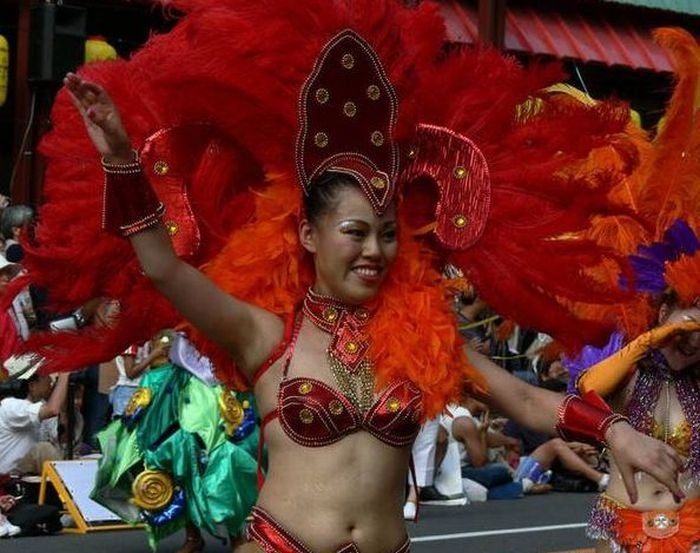|
|
Samba Carnival, Japan
|
In Brazil, folklorists suggest that the word "samba" is a corruption of the Kikongo word "Semba", translated as "umbigada" in Portuguese, meaning "a blow struck with the belly button".
One of the oldest records of the word samba appeared in magazine's Pernambuco O Carapuceiro, dated February 1838, when Father Miguel Lopes Gama of Sacramento wrote against what he called the "samba d'almocreve" - not referring to future musical genre, but a kind of merriment (dance drama) popular for blacks of that time. According to Hiram Araújo da Costa over the centuries, the festival of dances of slaves in Bahia were called "samba".
In the middle of the 19th century, the word samba defined different types of music made by African slaves, when conducted by different types of Batuque, but assumed its own characteristics in each Brazilian states, not only by the diversity of tribes for slaves, and the peculiarity of each region in which they were settlers. Some of these popular dances were known: bate-baú, samba-corrido, samba-de-roda, samba-de-Chave and samba-de-barravento in Bahia; coco in Ceará; tambor-de-crioula (or ponga) in Maranhão; trocada, coco-de-parelha, samba de coco and soco-travado in Pernambuco; bambelô in Rio Grande do Norte; partido-alto, miudinho, jongo and caxambu in Rio de Janeiro; samba-lenço, samba-rural, tiririca, miudinho and jongo in São Paulo.
|
|









